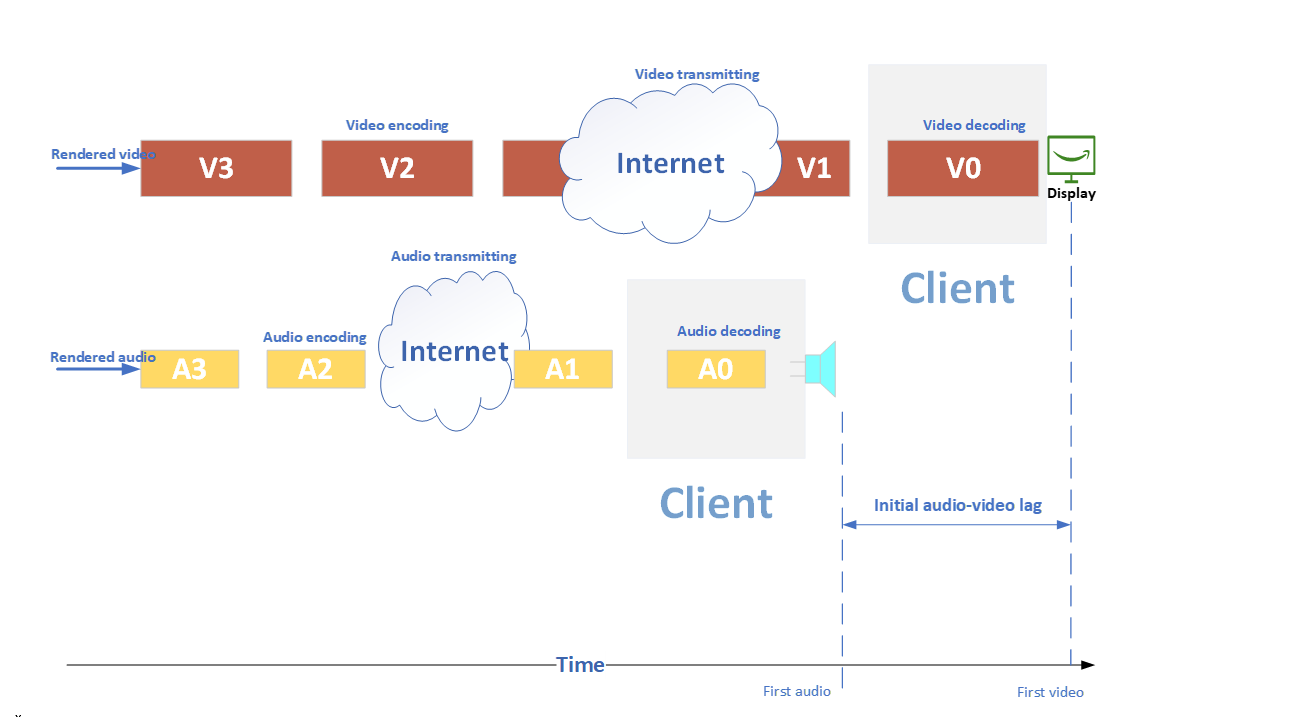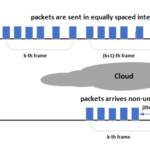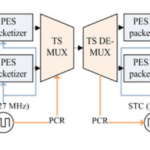Let’s assume the first audio and video frames are rendered (or created) simultaneously.
Then an audio encoder would take less time than an video encoder (video encoding is much more complex than audio one). Consequently, audio encoded frame is expected to be ready for transmission earlier than corresponding video frame.
Moreover, audio frame size is about 1KB and hence such small frame is quickly transmitted while an ordinary video frame size is 20-40KB and transmission of such data chunk would take a while (say, 16-30ms).
In addition, decoding of audio tends to take less time than decoding of video.

Thus, at the start audio is output earlier than video, despite both audio and video frames are rendered (created) simultaneously. A lag between audio and video might occur (audio is ahead of video). Although the lag is not expected to be noticeable as lip-sync (20-30ms), it’s recommended to delay the first audio frame to make both audio and video appear simultaneously at Client’s side, because in further lag between audio and video might grow and a lip-sync might be noticeable.
23+ years’ programming and theoretical experience in the computer science fields such as video compression, media streaming and artificial intelligence (co-author of several papers and patents).
the author is looking for new job, my resume








I like this blog very much, Its a rattling nice office to read and get info .
The following time I learn a blog, I hope that it doesnt disappoint me as a lot as this one. I imply, I do know it was my choice to read, but I really thought youd have something attention-grabbing to say. All I hear is a bunch of whining about one thing that you would repair in the event you werent too busy on the lookout for attention.
Heya i am for the first time here. I came across this board and I to find It really useful & it helped me out much. I am hoping to offer one thing again and help others like you aided me.
I’d should examine with you here. Which is not something I often do! I enjoy reading a put up that can make folks think. Also, thanks for allowing me to remark!
Can I just say what a relief to find someone who really knows what theyre speaking about on the internet. You definitely know the best way to bring a difficulty to mild and make it important. Extra folks have to read this and understand this aspect of the story. I cant imagine youre no more well-liked since you positively have the gift.
Rattling nice style and great content, very little else we want : D.
You made some decent points there. I appeared on the web for the difficulty and found most people will go along with along with your website.
We absolutely love your blog and find the majority of your post’s to be just what I’m looking for. Do you offer guest writers to write content available for you? I wouldn’t mind publishing a post or elaborating on a number of the subjects you write about here. Again, awesome weblog!
Hello.This article was extremely fascinating, especially because I was investigating for thoughts on this issue last couple of days.